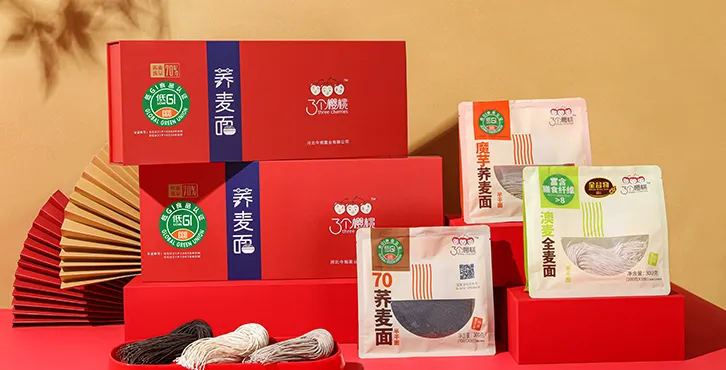Deliciously Chilled Korean Noodles for a Refreshing Summer Meal
Korean Cold Noodles A Refreshing Delight
As summer approaches, the desire for refreshing, light meals becomes more prominent. One popular Korean dish that perfectly fits this description is Korean cold noodles, or naengmyeon. This dish not only satisfies your hunger but also offers a revitalizing taste that reflective of the vibrant Korean culinary tradition.
Origins of Naengmyeon
Naengmyeon has its roots in North Korea, specifically in the region of Pyongyang. It was originally created as a dish to be enjoyed during festive occasions like birthdays. Over time, it gained popularity throughout Korea and has become a staple in both North and South Korean cuisines. Its revival in South Korea during the 20th century, especially after the Korean War, made it a must-have dish at summer gatherings, helping it carve a niche in Korea's culinary landscape.
Types of Naengmyeon
There are two primary types of naengmyeon that you might encounter mul naengmyeon and bibim naengmyeon.
1. Mul Naengmyeon This is the cold broth variation. It consists of thin, chewy buckwheat noodles served in an icy chilled broth made from meat stock, often garnished with slices of cucumber, pear, and boiled eggs. The broth is often seasoned with a touch of vinegar and mustard, giving it a tangy, refreshing taste. The cold temperature and the slight acidity offer relief from the summer heat.
2. Bibim Naengmyeon This style is a spicy, mixed version. The noodles are served without broth and topped with a spicy sauce made from gochujang (Korean chili paste), sesame oil, and vinegar. It’s then typically garnished with vegetables, a hard-boiled egg, and sometimes beef or sliced pork. This dish is perfect for those who enjoy a kick of spice!
Ingredients Used
The main ingredient in naengmyeon is the noodles themselves, typically made from buckwheat flour, although sometimes sweet potato starch or wheat flour is used. The buckwheat noodles offer a unique chewy texture that is distinct from other noodles, forming the base of this dish.
korean cold noodles

Accompanying the noodles are fresh, crisp vegetables such as cucumbers and radishes, which provide a refreshing crunch. The broth or sauce often contains elements like vinegar, sesame oil, and gochugaru (Korean chili flakes), introducing balancing flavors that enhance the eating experience.
How to Enjoy Naengmyeon
One of the best ways to enjoy naengmyeon is to visit a Korean restaurant, where you can experience it prepared to perfection. However, making it at home is also an enjoyable and rewarding process. To prepare mul naengmyeon, start by cooking the buckwheat noodles until tender, then rinse them under cold water to achieve that characteristic chewiness. Prepare the broth by simmering beef, spices, and aromatics, then chill it. Serve the noodles in the chilled broth with your favorite toppings.
For bibim naengmyeon, the preparation is even simpler. You can mix the noodles with the spicy sauce and top with fresh vegetables and protein of your choice.
Cultural Significance
Naengmyeon is more than just a dish; it's a cultural experience. Eating naengmyeon during the sweltering summer not only cools the body but also creates a sense of communal dining as family and friends gather together to share the meal. In Korea, the tradition of serving naengmyeon during important celebrations such as birthdays or the summer solstice reflects its connection to cultural festivities.
Many Korean families have their own special recipes for naengmyeon, often passed down through generations, making this dish synonymous with warm memories and cherished family time.
Conclusion
Korean cold noodles are a delightful dish that encapsulates the essence of Korean cuisine—refreshing, comforting, and versatile. Whether you prefer the milder flavor of mul naengmyeon or the spicy notes of bibim naengmyeon, this dish is a beautiful representation of Korea’s rich culinary history and culture. So, this summer, whether you're dining at a local Korean restaurant or trying out a recipe at home, be sure to indulge in this fantastic dish. Your taste buds will thank you!
-
Unlock the Delicious Potential of Yam NoodlesNewsAug.11,2025
-
The Authentic Taste of Lanzhou NoodlesNewsAug.11,2025
-
Savor the Art of Hand Pulled NoodlesNewsAug.11,2025
-
Indulge in the Timeless Delight of Spaghetti BologneseNewsAug.11,2025
-
Indulge in the Rich Flavor of Braised Beef NoodlesNewsAug.11,2025
-
Elevate Your Meals with the Magic of Fresh PastaNewsAug.11,2025
-
Unleash Your Inner Chef with Delectable Italian Pasta CreationsNewsAug.01,2025
Browse qua the following product new the we







